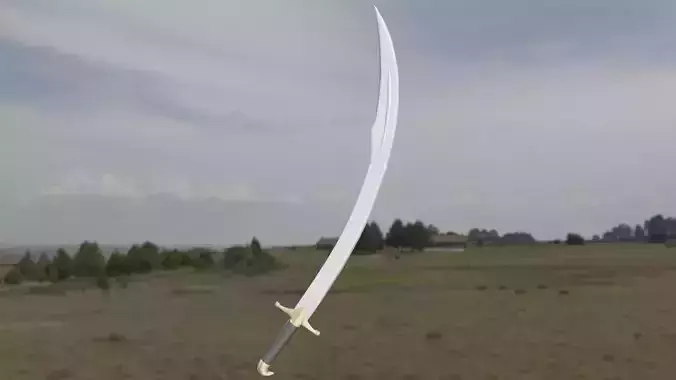1/9
Low Poly game-ready 3D Scimitar sword made in Blender. Texture packed into blend file. To preview and inspect the 3D model please use the link below:https://bit.ly/3qdaLPG
Thank you!
The following are regional variations, that are within the scimitar family of swords. Note that while these loan-words are used in English to refer to specific sword designs, in many cases (at various stages in history) in their native languages they often will translate to the word sword, of any design.
Shamshir (Iran and Pakistan) Kilij (Turkey and Egypt), one of the oldest known examples from the early 14th century Nimcha Pulwar Talwar Kirpaan Shotel
The English term scimitar is attested from the mid-16th century, derives from either the Middle French cimeterre (15th century) or from the Italian scimitarra. The ultimate source of these terms is unknown. Perhaps they are corruptions of the Persian shamshir, but the OED finds this explanation unsatisfactory.
The Persian word shamshēr which literally means “paw claw,” due to its long, curved design. The word has been translated through many languages to end at scimitar. In the Early Middle Ages, the Turkic people of Central Asia came into contact with Middle Eastern civilizations through their shared Islamic faith. Turkic Ghilman mamelukes serving under the Umayyad and Abbasid Caliphates introduced kilij type sabers to all of the other Middle Eastern cultures. Previously, Arabs and Persians used straight-bladed swords such as the earlier types of the Arab saif, takoba and kaskara.
During Islamization of the Turks, the kilij became more and more popular in the Islamic armies. When the Seljuk Empire invaded Persia and became the first Turkic Muslim political power in Western Asia, kilij became the dominant sword form. The Iranian shamshir was created during the Turkic Seljuk Empire period of Iran.
The term سَيْف saif in Arabic can refer to any Middle Eastern (or North African, South Asian) sword, straight or curved. The Arabic word cognates with the ancient Greek xiphos. The Greek word may have been borrowed from a Semitic language, as both saif and xiphos go back to an old (Bronze Age) wanderwort of the eastern Mediterranean, of unknown ultimate origin. Richard F. Burton derives both words from the Egyptian sfet.
REVIEWS & COMMENTS
accuracy, and usability.









